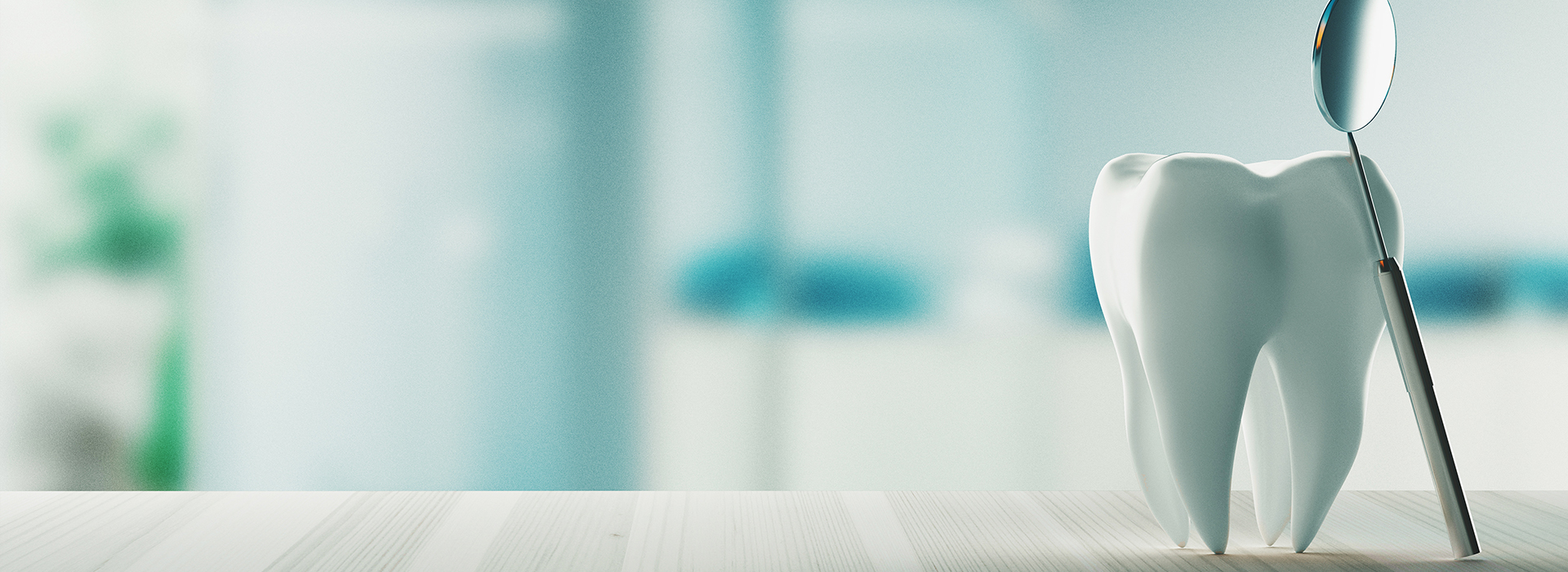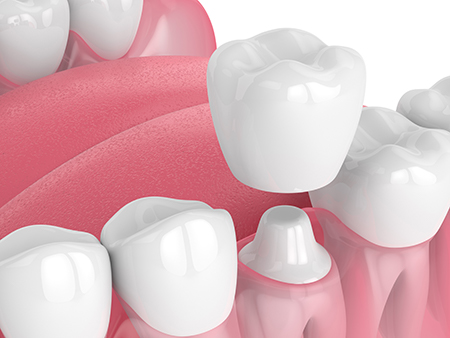
At the office of Chilmark Dental P.C., we combine modern materials and careful planning to restore teeth that are damaged, weakened, or cosmetically compromised. Ceramic crowns are a versatile solution: they rebuild strength, protect vulnerable teeth, and create a finish that blends naturally with the rest of your smile.
Our approach favors predictable, evidence-based care delivered with attention to comfort and detail. Whether a tooth needs protection after a root canal, replacement of a large filling, or improved appearance, a well-made ceramic crown can often be the ideal choice.
This page explains how ceramic crowns work, why they are chosen, how materials differ, and what you can expect from treatment — presented in clear, practical terms so you can make informed decisions about your care.
A ceramic crown is a full-coverage restoration designed to replace the visible portion of a tooth above the gumline. When a tooth has lost significant structure from decay, fracture, wear, or after endodontic therapy, a crown re-establishes the tooth’s shape, biting surface, and strength so it can withstand normal chewing forces.
Crowns are commonly used when a filling would be too small to protect the remaining tooth safely, when a tooth is cracked, or when a restoration must anchor a bridge or cover an implant abutment. In these scenarios, a crown cups the tooth like a helmet, preventing further damage and reducing sensitivity.
Beyond protection, crowns restore function: they help maintain proper tooth position, preserve bite relationships, and allow you to chew comfortably. When designed with attention to occlusion and fit, a crown becomes a stable, long-term part of the mouth that performs much like a natural tooth.
A dental crown can be an important step in preserving a compromised tooth and preventing more extensive treatment in the future.
Restores and preserves teeth weakened by decay or fracture
Replaces large or failing fillings that no longer protect the tooth structure
Provides full coverage for dental implants or the abutments supporting a bridge
Strengthens teeth after root canal therapy and reduces the risk of reinjury

All-ceramic crowns are made entirely from dental ceramics rather than relying on a metal core. This metal-free construction gives them a translucency and surface texture that mimic natural enamel, allowing light to pass and scatter in much the same way as a real tooth. The result is a restoration that looks lifelike from every angle.
Biocompatibility is another advantage: ceramic materials generally interact gently with surrounding gum tissue and are free of metal ions that can trigger sensitivities in some patients. Because there is no dark metal margin to show at the gumline, the aesthetic transition between crown and tooth is seamless, especially important for front teeth.
Contemporary ceramics also resist staining and maintain their color stability over time, which helps preserve the restored tooth’s appearance. Advances in material science have closed the gap between beauty and performance, making ceramic crowns suitable for many locations in the mouth.
For patients who want a natural appearance without metal, ceramic crowns often represent the best balance of strength and esthetics.
Highly lifelike translucency and surface sheen that match adjacent teeth
Requires less metal exposure and eliminates visible metal margins at the gumline
Lightweight, stain-resistant, and gentle on surrounding soft tissues
Metal-free construction supports patients with sensitivities to certain metals

There isn’t a one-size-fits-all ceramic for every situation. Different ceramic systems emphasize strength, translucency, or a balance of both, and the choice depends on the tooth’s location, the forces it will face, and the cosmetic goals for the restoration.
For front teeth where appearance is paramount, highly translucent porcelains or layered ceramic systems can reproduce natural shading and surface detail. For back teeth that endure heavier chewing loads, stronger materials such as monolithic zirconia or reinforced glass ceramics provide greater resistance to fracture.
Your dentist will evaluate the specific demands of the case — including bite dynamics, the condition of the underlying tooth, and neighboring teeth — to recommend a material that delivers durability without compromising aesthetics.
Common ceramic options include:
Lithium disilicate porcelain, known for a favorable blend of strength and esthetics
Leucite-reinforced pressable porcelain, valued for its lifelike translucency
Solid or monolithic zirconia, offering exceptional strength for posterior restorations
High-translucent zirconia, delivering improved esthetics while retaining notable durability

A crown’s lifespan depends on material choice, the condition of the supporting tooth, how well it fits, and how it’s cared for after placement. Good oral hygiene, sensible chewing habits, and regular dental checkups are the foundation for long-term success. With proper care, many ceramic crowns provide years of reliable service.
Protecting a crown from excessive force is also important. If you grind or clench your teeth, wearing a custom night guard can reduce risk of fracture or wear. Similarly, avoiding hard or very sticky foods can minimize sudden stresses on the restoration.
During follow-up visits, your dentist will check the crown’s margins, contact points with neighboring teeth, and occlusion to ensure everything functions smoothly. If minor adjustments are needed, they are typically straightforward and help extend the restoration’s performance.
When a crown eventually requires attention — for example, due to wear or changes in the surrounding tooth — your dental team will guide you through replacement or repair options to preserve oral health and function.
Our practice combines technical precision with an eye for natural-looking results. We use up-to-date milling and laboratory techniques and select ceramic materials based on each patient’s functional needs and aesthetic expectations. This careful, case-by-case approach helps produce restorations that look good and integrate well with your bite.
From diagnostic planning and tooth preparation to final placement, we emphasize clear communication so you understand the goals and steps in your treatment. Attention to detail in impressions, shade selection, and occlusal adjustments all contribute to predictable outcomes.
If you’re considering a crown to restore a damaged or weakened tooth, our team can explain material options and outline a treatment pathway that fits your oral health priorities. We aim to deliver durable, natural results that protect function and enhance appearance.
Summary: Ceramic crowns offer a blend of strength, biocompatibility, and esthetics that make them a strong option for restoring damaged, weakened, or unattractive teeth. Contact us to learn more about how a ceramic crown could fit into your dental care plan and what to expect during treatment.
While a dental filling is designed to replace a portion of a decayed or damaged tooth, a dental crown offers full coverage to restore the tooth’s entire outer surface. A well-fitting dental crown not only protects and strengthens the underlying tooth structure, but it also restores the tooth’s appearance and function.
The procedure for getting an all-ceramic crown is much like the procedure for getting any other type of crown. In all cases, the tooth needs to be prepared, an impression taken, and a permanent crown cemented into place. A single all-ceramic crown can typically be fabricated over the course of two visits. However, with CAD/CAM technology, a same-day crown can be fabricated from start to finish in a single visit. With the first approach, a temporary crown is typically worn until the second visit, when the permanent restoration is placed. As with every treatment plan, our office will explain your best options in care.
As the name implies, a temporary crown is only worn for a short time until the permanent crown is placed. A temporary crown is typically fabricated from durable tooth-colored dental acrylics. While designed to protect the underlying tooth between appointments, and until your new permanent crown gets placed, a temporary crown is also fabricated to look like a natural tooth and maintain the look of your smile.
While you should feel better having an attractive and functional tooth to restore your smile, your tooth may feel a little sensitive following treatment. This initial sensitivity will subside. We take great care to make sure your new restoration looks great, fits well, and your bite is perfect. However, we’re always happy to make any minor adjustments to ensure your comfort.
With some exceptions, teeth with root canal procedures are typically restored and protected from further damage with a full-coverage crown. Based on what’s best for your smile, our office will recommend the most appropriate restoration to maintain the health and longevity of your tooth following a root canal procedure.
A dental crown is a long-term restoration that, if properly cared for, can serve you well for many years to come. Once your new crown is placed, it requires the same brushing, flossing, and periodic checkups as your natural teeth. Avoid biting your fingernails and chewing on hard or sticky objects such as ice, pencils, or taffy, which can damage or loosen your crown. Remember, clenching and grinding your teeth puts excessive pressure on both natural teeth and dental restorations. Unless treated, this habit can compromise the longevity and integrity of your dental work, including crowns.
Although your new all-ceramic crown restores the tooth's strength, form, and function, you can still develop dental disease in the absence of proper care. To prevent gum disease and tooth decay, it’s essential to brush and floss as instructed and see our office for routine checkups, cleanings, and care.
How long a dental crown lasts depends on various factors, including your level of oral care, diet, and oral habits. While the standard answer is that dental crowns can last anywhere from 5 to 15 years, existing literature confirms that most dental crowns remain in place at 15 to 20 years.
At the office of Chilmark Dental P.C., we strive to provide the highest quality of care to address all your dental needs. Once we’ve had the opportunity to examine your smile, we can give you a clear picture of any dental issues that are present, along with a quote for how much treatment will be. The cost of dental crowns can vary a little, depending on the type of crown and its location. Our goals are to provide the highest quality of care and help patients begin treatment without additional financial stress or delay. We’re always happy to answer all your questions on dental insurance coverage, available financing, and payment plans.
Coverage for all-ceramic crowns depends on your dental insurance plan. Today, many dental plans provide some level of coverage for all-ceramic crowns. At the office of Chilmark Dental P.C., we work with patients to optimize their dental benefits and get the care they need to maintain healthy and beautiful smiles!
A ceramic crown is a full-coverage dental restoration fabricated from advanced ceramic materials to replace the visible portion of a damaged or weakened tooth. It fits over the prepared tooth and restores the original shape, function and appearance while providing a durable surface for chewing. Modern ceramic crowns are metal-free and designed to mimic the translucency and texture of natural enamel for a lifelike result.
These restorations can be made in a dental laboratory or milled in-office using digital scanning and CAD/CAM technology, enabling precise fit and consistent quality. Because they are biocompatible, ceramic crowns are a common choice for patients with sensitivities to metal. The goal of a ceramic crown is to protect the remaining tooth structure while restoring comfort, speech and chewing function.
A ceramic crown is often recommended when a tooth has extensive structural damage from decay, a large or broken filling, or trauma that compromises its strength. Crowns are also indicated to protect teeth after root canal therapy, to cap dental implants, and to serve as abutments for dental bridges. In cosmetic cases, a crown can improve the appearance of a severely discolored, misshapen or undersized tooth when less invasive options are not appropriate.
Dental professionals also consider crowns for teeth that endure heavy functional stresses, such as those affected by clenching or grinding, where a stronger restoration is needed to prevent further damage. The decision to place a crown is based on careful clinical evaluation, diagnostic imaging and discussion of a patient’s functional and aesthetic goals. Your dentist will review alternatives and explain why a crown is the most predictable option for long-term health in a given situation.
Ceramic crowns offer excellent aesthetic properties because they interact with light similarly to natural teeth, producing lifelike translucency and luster. They are metal-free, which reduces the risk of allergic reactions and eliminates the dark metal margin that can appear at the gumline with some other crown types. Many ceramic materials are also stain-resistant and maintain their appearance over time when properly cared for.
Beyond aesthetics, modern ceramic restorations provide reliable strength and wear resistance suitable for many clinical situations, and they are generally well tolerated by surrounding soft tissues. Because they can often be bonded to the tooth, ceramic crowns can enhance the structural integrity of a compromised tooth and distribute biting forces more evenly. These combined properties make ceramic crowns a versatile option for both anterior and posterior restorations when selected appropriately.
There are several ceramic crown materials commonly used, each with strengths and aesthetic characteristics. Lithium disilicate offers excellent translucency and strength for anterior and some posterior restorations, leucite-reinforced porcelain provides good aesthetics for front teeth, and monolithic zirconia delivers high strength for posterior teeth and cases with heavy bite forces. High-translucency zirconia blends improved aesthetics with robust mechanical properties for situations that require both appearance and durability.
Material selection depends on the tooth’s location, occlusal load and the patient’s cosmetic expectations, so the clinician weighs these factors during treatment planning. Advances in digital workflows, including CAD/CAM milling and high-quality sintering, allow precise fabrication regardless of the chosen ceramic. Your dentist will explain the trade-offs between translucency and strength and recommend the option that best meets functional and aesthetic needs.
The process usually begins with a comprehensive examination, diagnostic imaging and a discussion of treatment goals to determine whether a crown is appropriate. During the preparation visit the tooth is shaped to create room for the crown, and a digital scan or conventional impression is taken to capture the exact contours of the prepared tooth. A temporary crown may be placed to protect the tooth while the final restoration is fabricated, either in a specialized dental laboratory or milled in-office.
Once the final crown is ready, the dentist checks fit, color and bite, makes any necessary adjustments and permanently bonds or cements the restoration. After placement you will receive instructions on care and any short-term precautions while tissues settle and the cement sets. At Chilmark Dental P.C., clinicians focus on precise fit and occlusion to promote long-term success and patient comfort.
Caring for a ceramic crown is similar to caring for a natural tooth: brush twice daily with a soft-bristled brush and fluoride toothpaste and clean between teeth with floss or interdental cleaners. Maintaining healthy gums and removing plaque at the crown margins helps prevent decay of the underlying tooth and supports long-term success. Regular professional cleanings and dental checkups allow your dentist to monitor the crown and surrounding tissues and to address any early concerns.
If you have habits such as grinding or clenching, your dentist may recommend a night guard to reduce excessive forces that can accelerate wear or damage. Avoid using the crown to open packages or bite very hard objects, and report persistent sensitivity, looseness or discomfort so it can be evaluated promptly. Proper oral hygiene and protective measures go a long way toward extending the life of a ceramic restoration.
The lifespan of a ceramic crown varies with factors such as the chosen material, oral hygiene, the amount of force the tooth endures and the quality of the underlying tooth structure and cementation. On average, well-made ceramic crowns can function successfully for many years when maintained with good home care and regular dental visits. Routine monitoring allows early detection of issues like marginal breakdown, recurrent decay or wear that could affect longevity.
Certain habits and conditions, including untreated bruxism, poor oral hygiene or uncontrolled gum disease, can reduce the service life of a crown. Selecting the appropriate ceramic type for the tooth’s location and occlusal demands and following your dentist’s maintenance recommendations are important steps to maximize durability. When concerns arise, timely evaluation can often preserve the restoration or guide a planned replacement.
Ceramic crowns can be used for both anterior and posterior teeth, but material choice is guided by differing aesthetic and strength requirements. Front teeth commonly require materials with high translucency and excellent color-matching ability to blend with adjacent natural teeth, while back teeth often demand materials that prioritize fracture resistance and load-bearing capacity. Clinicians balance these needs by selecting ceramics like lithium disilicate or layered porcelain for anterior cases and stronger zirconia options for posterior restorations when appropriate.
In some situations a hybrid approach is used, such as layering more translucent porcelain over a stronger ceramic substructure to achieve both strength and aesthetics. The decision also considers opposing dentition, bite dynamics and the condition of the tooth being restored. Your dental team will explain which material and design best meet the functional demands and cosmetic goals for the specific tooth.
Choosing the right ceramic begins with a thorough clinical assessment that includes evaluating the tooth’s remaining structure, the occlusion, esthetic expectations and any functional habits such as grinding. Diagnostic tools such as digital imaging, intraoral scans and shade matching help the dentist predict how a material will perform and appear in your mouth. The clinician also considers the restoration’s role—whether it will be a single crown, part of a bridge or the final restoration for an implant—and selects a material that meets those mechanical and aesthetic requirements.
Discussion with the patient about appearance priorities and long-term goals is an essential part of the selection process, and the dentist will explain the advantages and limitations of the recommended options. When appropriate, the treatment plan may include mock-ups or temporary restorations to preview results before fabricating the final crown. At Chilmark Dental P.C., treatment planning emphasizes predictable function and natural-looking outcomes tailored to each patient’s needs.
After crown placement you may experience transient sensitivity to temperature or pressure as surrounding tissues adapt to the restoration, and slight soreness in the supporting gum tissue is common for a short period. Minor adjustments to the bite are sometimes needed to ensure comfortable chewing and proper occlusion, and these adjustments are typically accomplished chairside at a follow-up visit. If you notice persistent pain, signs of infection, looseness or a visible gap at the crown margin, contact your dentist for prompt evaluation.
Small chips or rough areas can sometimes be smoothed or repaired, while significant fractures or failed margins may require replacement of the crown depending on the extent of damage. The dentist will assess the cause of any complication—such as recurrent decay, cement failure or excessive force—and recommend the appropriate restorative approach. Timely professional attention and ongoing preventive care help address issues early and preserve both the restoration and the underlying tooth.
Phone:
Email: